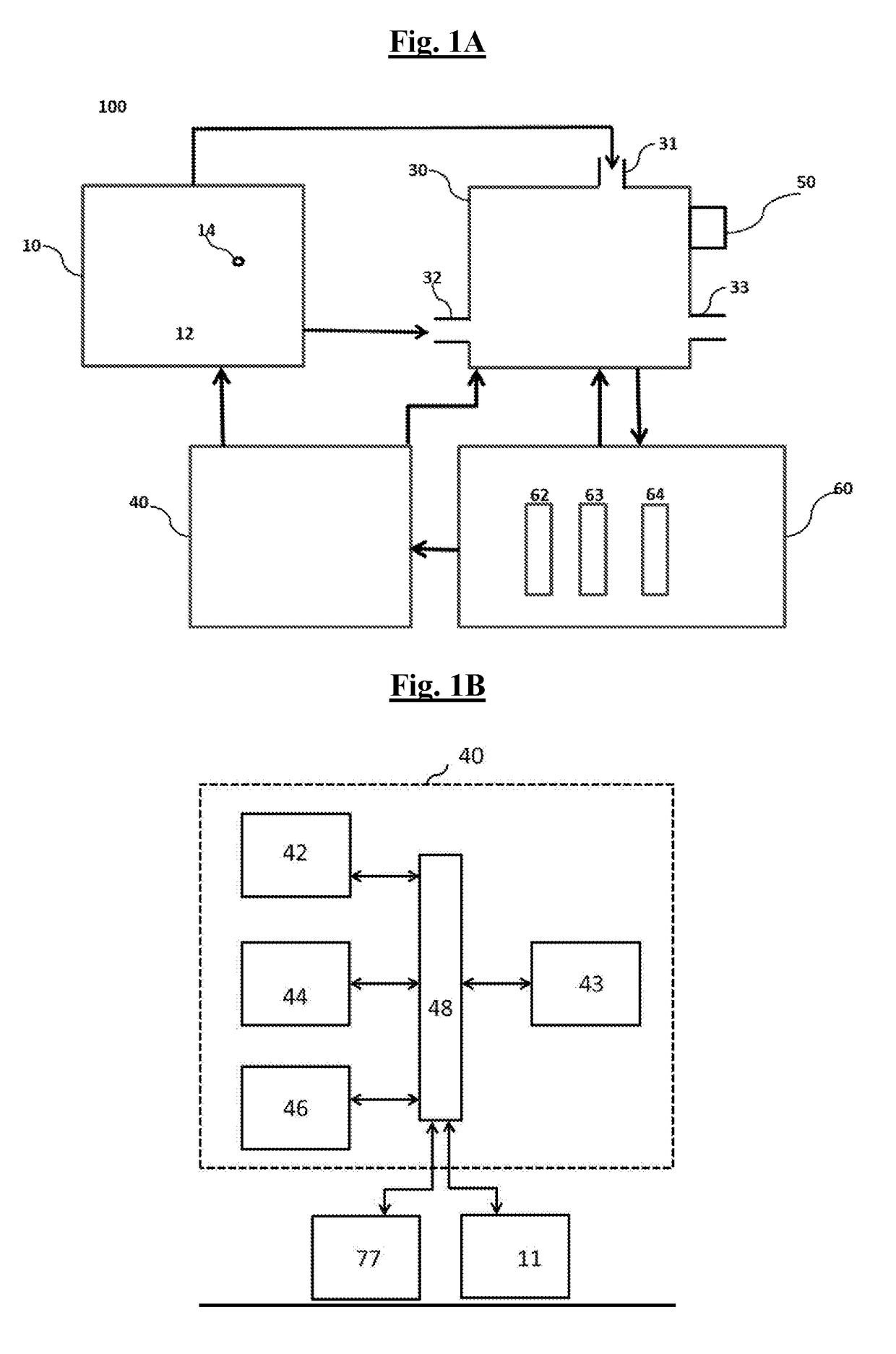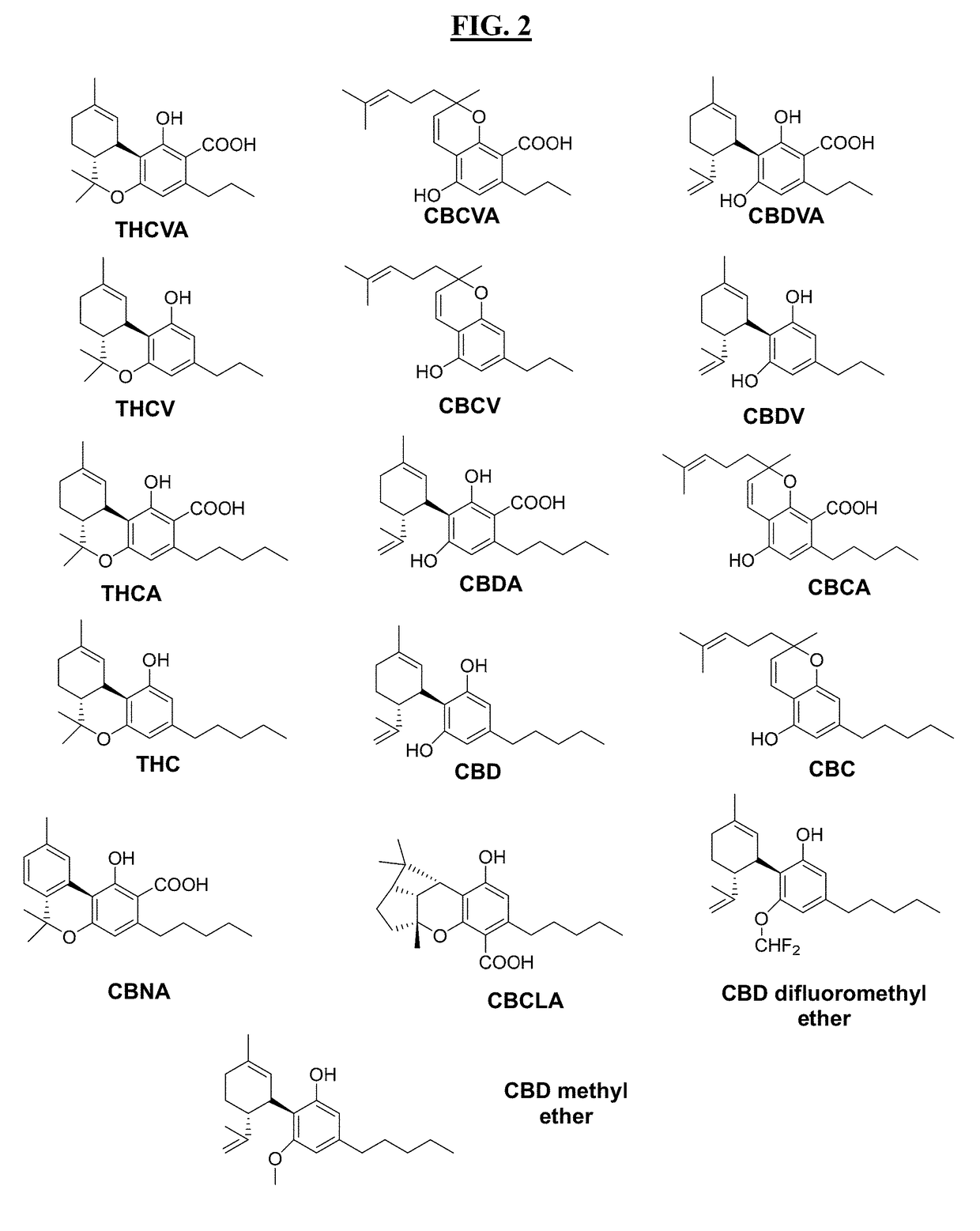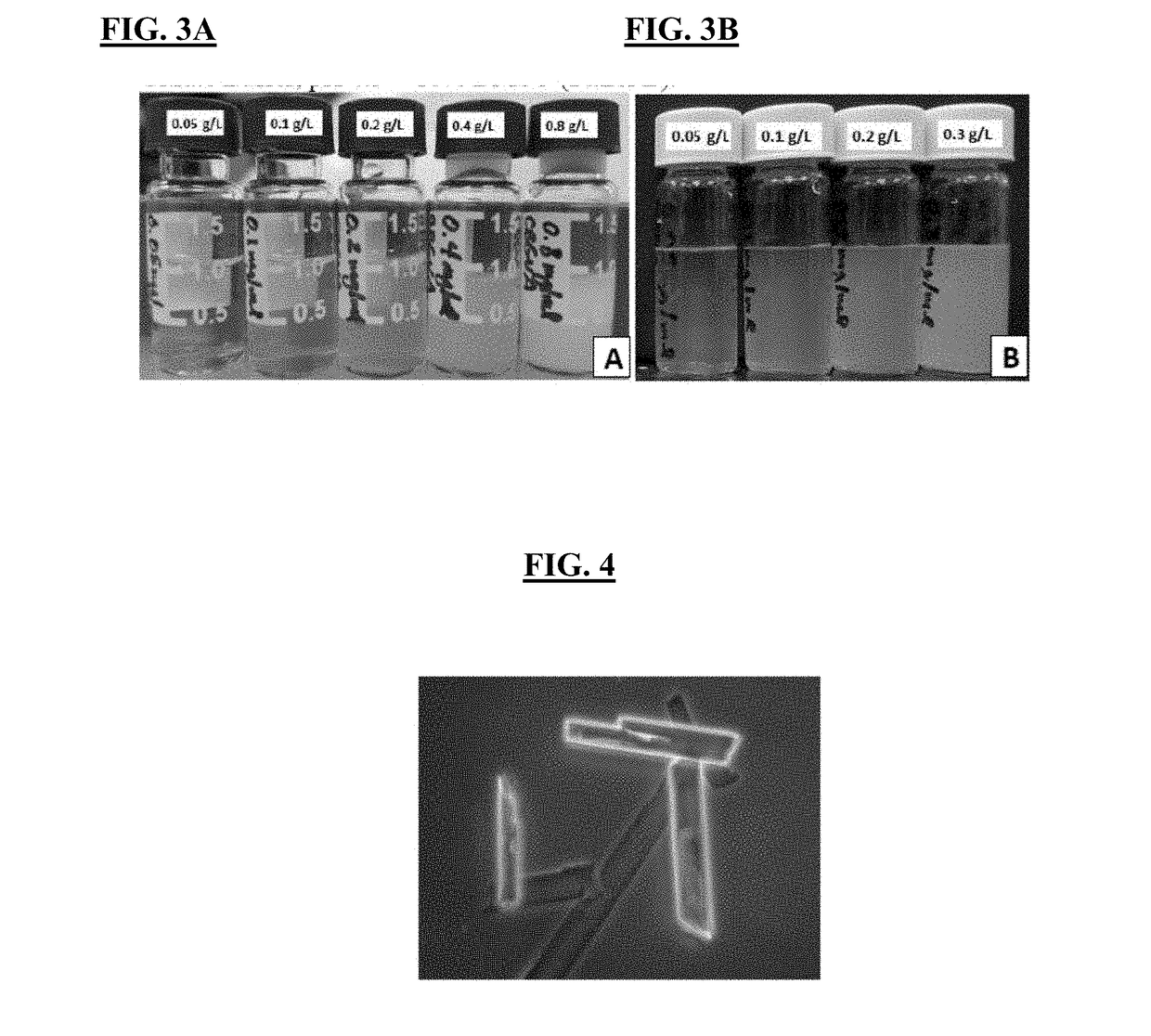Apparatus, methods and composition for synthesis of cannabinoid compounds
a cannabinoid compound and apparatus technology, applied in specific use bioreactors/fermenters, enzyme production/based bioreactors, biomass after-treatment, etc., can solve the problems of hampered therapeutic use of cannabinoid compounds, particularly varins, extraction, isolation, and purification of cannabinoid compounds from plant tissue,
- Summary
- Abstract
- Description
- Claims
- Application Information
AI Technical Summary
Benefits of technology
Problems solved by technology
Method used
Image
Examples
working examples
Example 1 CBGVA Crystallization in Aqueous Buffer
[0157]CBGVA was dissolved at 16 g / L in DMSO and added to 20 mM citrate buffer, pH 4.5 to achieve final CBGVA concentrations in buffer of 0.05, 0.1, 0.2, 0.4, and 0.8 g / L and a DMSO concentration of 5% vol / vol. There was no visible precipitation / crystallization in the 0.05 g / L CBGVA vial, but all of the other vials showed progressively more cloudiness (FIG. 3A). In contrast, vials with CBGA in 20 mM citrate buffer (pH 4.5) and 10% DMSO exhibited precipitation / crystallization, even at 0.05 g / L concentration of (FIG. 3B).
[0158]These results show that CBGVA is more soluble in aqueous solution than CBGA. Initially, microscopic examination of the solutions showing cloudiness and / or precipitation revealed small spherical structures. However, after 24 hours large crystals had formed in most of the solutions (FIG. 4). Both CBGA and CBGVA are more soluble in polar organic solvents compared to water (data not shown).
example 2
Biphasic Oil-Aqueous Systems (1:1) Using CBGVA as Substrate and Lyophilized Cannabinoid Synthases (THCA and CBDA Synthases)
[0159]Bio-catalysis was performed using a 1:1 biphasic oil:aqueous solvent system. The oil phase comprising soy-bean oil contained 5 g / L CBGVA. The aqueous phase comprising citrate buffer, pH 5.5, and 10% DMSO contained 32 mg / mL THCA synthase or CBDA synthase. The synthase was previously lyophilized for storage. A 1:1 ratio (1.5 mL of each) of the aqueous and oil phases were were used for bio-catalysis.
[0160]The bi-phasic reaction mixture (3 mL total volume) was placed on a tube rotator and agitated at 40 rpm at room temperature. The conversion of substrate to cannabinoid products was monitored by removing sample aliquots of oil at each time point shown in FIGS. 5A-5B. Prior to sample collection, the vial containing the reaction mixture was removed from the tube rotator and the two phases allowed to separate by placing the vial of the reaction mixture on the ben...
example 3
Biphasic Oil-Aqueous Systems (1:1) Using CBGVA as Substrate and Purified CBDA Synthase
[0162]This experiment applied the same reaction conditions as Example 2 except that a purified CBDA synthase was used here (instead of a lyophilized CBDA synthase). Methods to purify CBDA synthase are known in the art. In this experiment, the CBDA synthase was purified using an ion exchange chromatography (Sepharose SP Fast Flow resin (GE healthcare life science)). In this instance, the experiments were intended to test whether the activity of the cannabinoid synthase enzyme and / or cannabinoid product profiles differ significantly when a pure enzyme is used for bio-catalysis.
[0163]As demonstrated in FIG. 6A, the amount of CBGVA conversion to the cyclized products reached about 88% in a time less than 200 hours. The ratio of CBCVA to CBDVA in this reaction was lower than in the lyophilized enzyme reaction (FIG. 6B). Both lyophilized and purified CBDA synthases favored the production of CBCVA.
PUM
| Property | Measurement | Unit |
|---|---|---|
| concentration | aaaaa | aaaaa |
| concentration | aaaaa | aaaaa |
| concentration | aaaaa | aaaaa |
Abstract
Description
Claims
Application Information
 Login to View More
Login to View More - R&D
- Intellectual Property
- Life Sciences
- Materials
- Tech Scout
- Unparalleled Data Quality
- Higher Quality Content
- 60% Fewer Hallucinations
Browse by: Latest US Patents, China's latest patents, Technical Efficacy Thesaurus, Application Domain, Technology Topic, Popular Technical Reports.
© 2025 PatSnap. All rights reserved.Legal|Privacy policy|Modern Slavery Act Transparency Statement|Sitemap|About US| Contact US: help@patsnap.com



